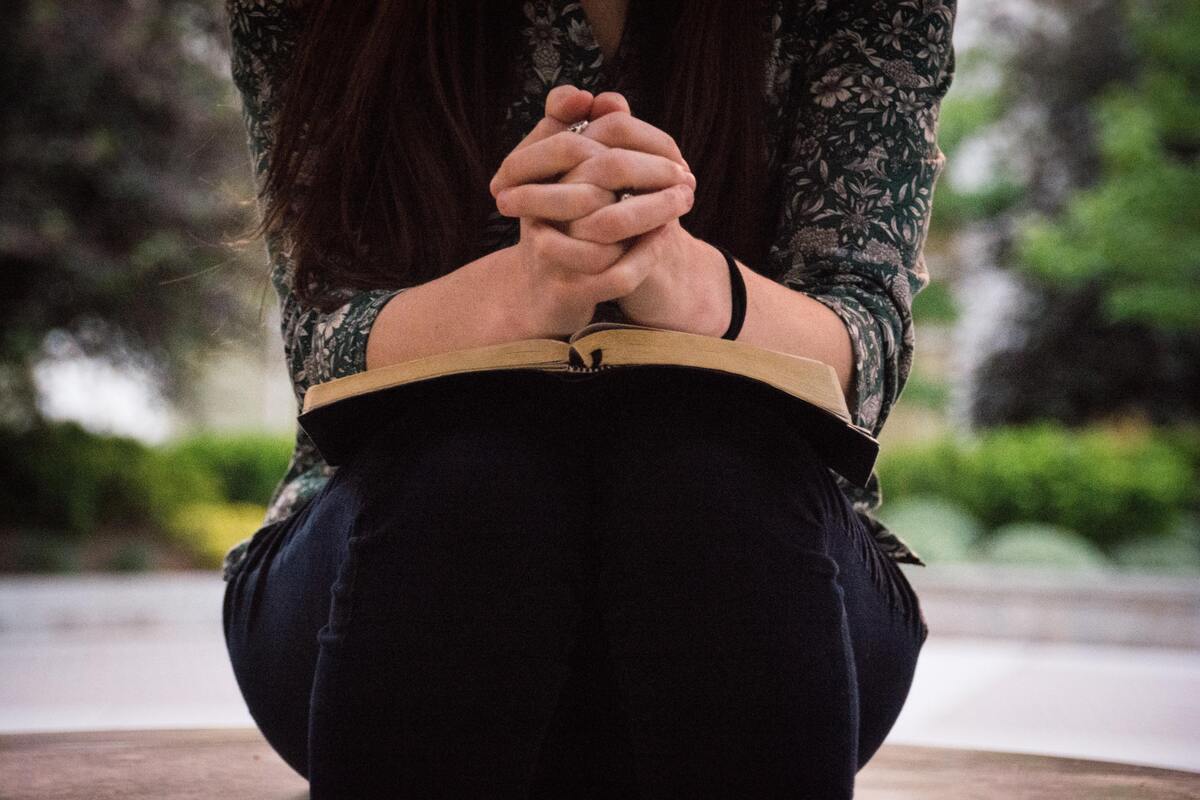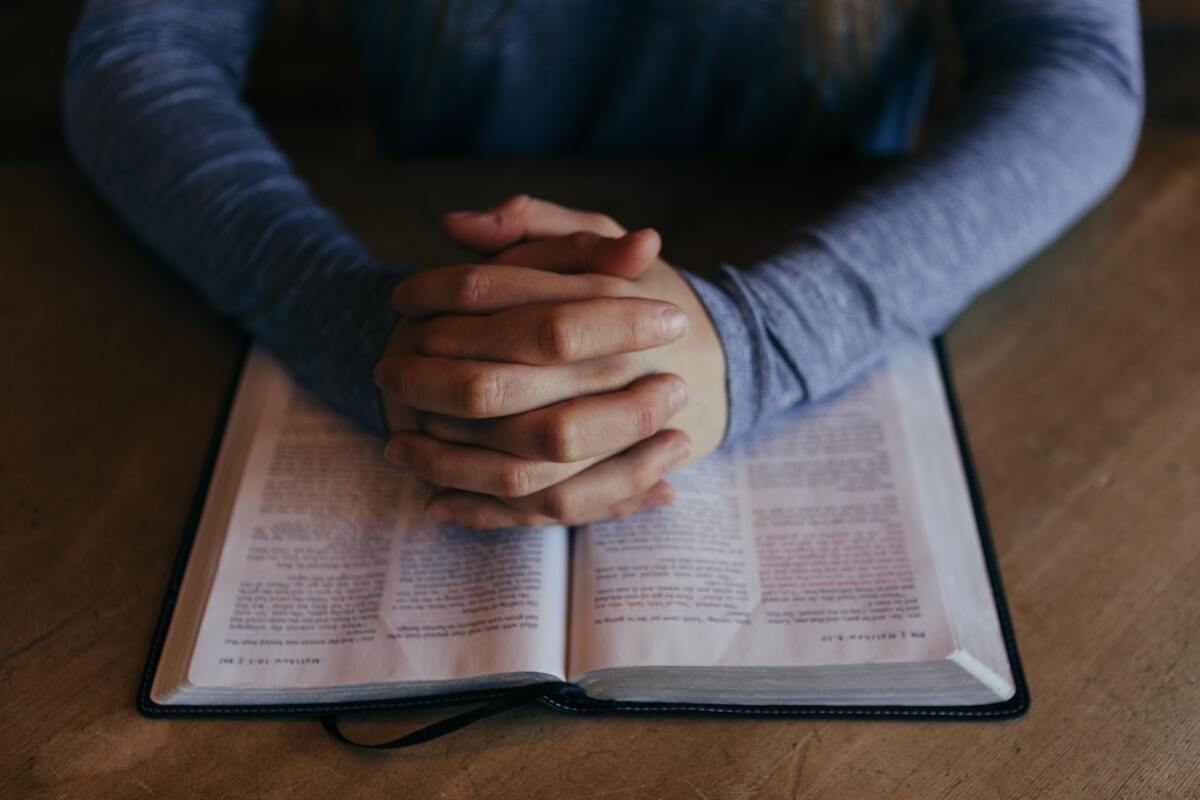Table of contents
Learn all about the period of religious Lent!

Religious Lent is the period of forty days preceding Easter, considered the main celebration of Christianity because it symbolizes the resurrection of Jesus Christ. It is a practice that has been present in the lives of adherents of this religion since the fourth century.
In the forty days that precede Holy Week and Easter, Christians dedicate themselves to reflection. The most common is that they recollect themselves to do prayers and penance in order to remember the forty days that Jesus spent in the desert, as well as the sufferings of the crucifixion.
Throughout the article, the meaning of the religious Lent period will be explored in more detail, so if you want to know more about it, just keep reading.
Understanding more about religious Lent

Religious Lent is a celebration linked to Christian doctrines. It originated in the fourth century and begins on Ash Wednesday. During its duration, adherents of Christianity carry out penances to remember the sufferings of Jesus Christ and church ministers wear purple vestments as a way of symbolizing pain and sadness.
Below, more details about religious Lent will be commented on in order to broaden understanding. To learn more, please continue reading.
What is it?
Religious Lent corresponds to a period of forty days and precedes Holy Week and Easter, the occasion that marks the resurrection of Jesus Christ. It is always celebrated on Sundays since the fourth century by the Lutheran, Orthodox, Anglican and Catholic churches.
It is possible to state that the period begins on Ash Wednesday and extends until Palm Sunday, which precedes Easter. This is because the Easter cycle comprises three distinct phases: preparation, celebration and prolongation. Therefore, religious Lent is a preparation for Easter.
When did it come about?
It is possible to affirm that Lent appeared in the IV century A.D. However, only after Pope Paul VI's apostolic letter the period was delimited and currently Lent has 44 days of duration. Although many people associate its end with Ash Wednesday, in fact, its duration extends until Thursday.
What is the meaning of Lent?
For the faithful of the various churches linked to Catholicism, religious Lent represents a period of spiritual preparation for the arrival of Easter. Thus, it is a time that requires reflection and sacrifices. Therefore, some people are willing to attend church more regularly during this time and intensify their practices during the 44 days of Lent.
In addition, the faithful choose to adopt a simpler lifestyle during this period so that they can remember the suffering of Jesus Christ in the desert. The intention is to live through some of His trials.
Lent and the time of the seventieth
The time of the septuagesima can be described as a liturgical period of Christianity aimed at preparing for Easter. Preceded by Carnival, this period is a representation of the creation, the rise and fall of man.
The period in question begins on Septuagesima Sunday, the ninth before Easter, and continues until Ash Wednesday. Thus, the time of Septuagesima includes the Sixtieth and Fiftieth Sundays, in addition to the aforementioned Ash Wednesday, which represents the first day of religious Lent.
Catholic Lent and the Old Testament
The number 40 is a recurring presence in the Old Testament. At different times it appears to represent periods of profound meaning for Catholicism and for the Jewish community. By way of illustration it is possible to cite the story of Noah, who after building the ark and surviving the flood had to spend 40 days adrift until he managed to reach a strip of dry land.
In addition to this story, it is worth remembering that of Moses, who walked through the desert of Egypt for 40 days with the goal of leading his people to the promised land.
Catholic Lent and the New Testament
The Catholic Lent also appears in the New Testament. Thus, after 40 days from the birth of Jesus Christ, Mary and Joseph took their son to the temple in Jerusalem. Another very symbolic record referring to the numeral 40 is the time Jesus himself spent in the desert before beginning his public life.
Other forms of religious Lent

There are several different forms of religious Lent, such as St. Michael's Lent. In addition, the practice goes beyond Catholicism and is adopted by other doctrines, such as Umbanda. Therefore, it is important to know these particularities to have a broader view of the period and its meanings.
If you would like to know more about other forms of religious Lent, please continue reading this article.
St Michael's Lent
St. Michael's Lent is a 40-day period that begins on August 15 and lasts until September 29. Created in 1224 by St. Francis of Assisi, during this time of the year religious make prayers and fasts inspired by the Archangel St. Michael.
This is because St. Francis of Assisi believed that this archangel has the function of saving souls at the last moment. In addition, he also had the ability to remove them from purgatory. Therefore, it is a tribute to the saint, although it has very similar fundamentals to Lent that remembers the sufferings of Jesus Christ.
Lent in Umbanda
Just as in the Catholicism religions, Lent in Umbanda begins on Ash Wednesday and has as its objective the preparation for Easter. It is a period dedicated to spiritual retreat and the 40 days also serve to reflect Jesus' time in the desert.
Therefore, the period should be focused on thinking about existence as a whole and the necessary steps to evolve. Umbandaists believe that Lent is a period of spiritual instability and, therefore, they try to protect themselves and seek purification of the heart and spirit during this period.
Lent in Western Orthodoxy
The Orthodox Church calendar has some differences from the traditional calendar, so that this is reflected in Lent. Although the goals of the period are the same, the dates are modified. This is because while the Roman Catholic Christmas is celebrated on December 25, the Orthodox celebrate the date on January 7.
In addition, the length of Lent has also been modified and is 47 days for the Orthodox. This is because Sundays are not counted in the Roman Catholic account, but are added by the Orthodox.
Lent in Oriental Orthodoxy
In Eastern Orthodoxy, there is a period of preparation for Great Lent that lasts four Sundays. Thus, they have specific themes that serve to actualize moments in salvation history: Sunday of the Prodigal Son, Sunday of the Dispensation of Meat, Sunday of the Dispensation of Dairy, and Sunday of the Pharisee and the Publican.
Each of them has a different purpose. By way of illustration, one can point out that Prodigal Son Sunday proclaims the Holy Gospel according to Luke and the faithful are invited to schedule a confession.
Ethiopian Orthodoxy
In Ethiopian Orthodoxy, there are seven distinct periods of fasting during Lent, which is also seen as a period of preparation for Easter. However, in this religion, it lasts for 55 consecutive days. It is worth mentioning that the periods of fasting are obligatory and the most fervent religious can fulfill this practice for up to 250 days.
Thus, during Lent all products of animal origin, such as meat, eggs and dairy products are cut out. Abstention always takes place during Wednesdays and Fridays.
Pillars of Lent

Lent has three fundamental pillars: prayer, fasting and almsgiving. According to Catholicism, it is necessary to fast to polish the spirit and remember the trials of Jesus during his 40 days in the desert. Almsgiving, in turn, should be a practice adopted to exercise charity and, finally, prayer is a way to elevate the spirit.
Below, more details about the pillars of Lent will be commented on. If you want to know more about it, just continue reading the article.
Prayer
Prayer is considered one of the pillars of Lent because it functions as a representation of the relationship between God and man. Furthermore, it appears in the passage from Matthew 6:15, in which the pillars of Lent are properly arranged.
In the passage in question, it is suggested that prayers should be made in secret, always in a hidden place, so that the reward is received. This is associated with the idea that no one needs to be a witness to the penances that each person performs, since this is about their relationship between them and God.
Fasting
Fasting is capable of defining the relationship of human beings with the material aspects of their existence. Therefore, it is one of the pillars of Lent and is present in the passage from Matthew 6. In this passage, fasting is remembered as a practice that should not be viewed with sadness, since this is a sign of hypocrisy.
In the passage in question, people who do not fast from the heart are referred to as looking downcast for the purpose of drawing attention to themselves. Therefore, like prayer, fasting is not to be boasted about.
Charity
Charity, also referred to in the Bible as almsgiving, is a practice that speaks about the relationship we establish with our neighbor. Love for others was one of Jesus' great teachings and, therefore, the ability to show mercy for the suffering of others is present in the pillars of Lent, being cited in Matthew 6.
In this passage, almsgiving also appears as something that should be done in secret and not to demonstrate the generosity of one who supplies the need of another person. Doing this just to be seen as charitable is considered hypocritical by Catholicism.
Lenten practices

During Lent it is necessary to adopt some practices. The Catholic Church, through the gospel, provides the principles of prayer, fasting and charity, but there are other practices that can originate from these three and help in the idea of spiritual preparation for the Easter period, helping in the idea of recollection for reflection.
More details about these issues will be commented below, if you want to know more about it, continue reading the article.
God in the spotlight
God should be the center of attention during the season of Lent. This is expressed through prayers, but also through the idea of recollection. Thus, during these 40 days Christians should remain more reclusive and reflective, thinking about their relationship with the Father and about the presence of justice, love and peace in their lives.
Since Lent is also a period to seek the Kingdom of Heaven, this closer relationship with God can end up reflecting in the Catholic's life throughout the year and making him even more focused on his faith.
Deepening sacramental life
Having greater contact with the sacramental life is a way to get even closer to Jesus during the period of Lent. Thus, it is important to know that there are several distinct celebrations during Lent. The first of them takes place on Palm Sunday and represents the beginning of Holy Week.
The other commemorations are the Lord's Supper, Passion Friday and Hallelujah Saturday, on which the Easter Vigil, also known as the Mass of Fire, takes place.
Bible reading
Religion should be present in all moments of Lent, whether through its more philosophical side, prayers or Bible reading. Thus, Catholics usually adopt some practices to keep this moment more recurrent in their Lenten days.
In addition, reading the Bible is a way to remember all the suffering experienced by Jesus Christ in the desert, which is also part of the objectives of Lent. In this way, it is possible to perceive the value of his sacrifice more clearly.
Fasting from unnecessary attitudes and words
Fasting is a practice that is present during Lent, but not always in a literal way. Thus, it can be linked to the words and attitudes adopted by a person. Therefore, he/she can choose to give up recurring behaviors in his/her life that he/she has difficulty getting rid of at other times.
The purpose of Lent is also to help the adherents of Catholicism to find a path for their spiritual evolution. Therefore, being able to modify habits that are not positive in the eyes of God is also something valid for Lent.
Food abstinence
Abstinence from food is also a very common practice during the Lenten period. It functions as a way to remember the material trials that Jesus went through during his forty days in the desert and varies according to religion.
Thus, while some Catholics give up eating red meat for 40 days, there are others who fast on specific occasions. Furthermore, meat is not the only means of practicing food abstinence and there are faithful who choose to remove from their lives something they are in the habit of consuming with constancy.
Sexual abstinence
Another form of fasting is sexual abstinence, which can also be interpreted as a form of purification. Detachment from lust is seen by Catholicism as a form of spiritual elevation, since without the distractions of the flesh the faithful have more time to connect with their religious life and to devote to the prayers that the period calls for.
Therefore, sexual abstinence can be seen as a form of spiritual elevation during the Lenten period and is valid as a form of penance for Catholics at that time.
Charity
Charity is one of the supporting pillars of Lent because it speaks about the way we deal with others. However, the bible itself suggests that it should not be announced, but rather done in a silent way.
Otherwise it is considered hypocrisy because the author only wants to be seen as a good person and is not truly seeking spiritual evolution. According to Catholicism, the reward of charity is the very act of helping. Therefore, one should not expect anything in return for the practice.
Sundays of religious Lent

In all, the religious Lenten season covers six Sundays, which are named with Roman numerals from I to VI, the last of which is Palm Sunday of the Passion. According to doctrine, such Sundays take precedence and even if other Catholic feasts take place during the period, they are moved.
More details about the Sundays of religious Lent will be commented on below. If you wish to know more about this, continue reading the article to find out.
Sunday I
Sunday Masses during the Lenten season are different from the others, especially with regard to the readings. Thus, the passages read during the Masses are meant to recall the History of Salvation as a way of preparing the faithful for the great event of Easter, the resurrection of Jesus Christ.
In light of this, the reading for Sunday I of Lent is the story of the origin and creation of the world in seven days. This reading is considered an integral part of Cycle A because it is linked to the culminating moments of humanity.
Sunday II
On the Second Sunday of Lent, the reading focuses on the story of Abraham, considered by doctrine as the father of the faithful. It is a story of a journey full of sacrifices for the love of God and for his faith.
It is possible to state that this story is part of Cycle B, since it is concentrated around accounts concerning the Covenant, among which the story of Noah and the ark stands out. In addition, the praise announced by Jeremiah can also be categorized among the passages of this cycle.
Sunday III
The third Sunday, Sunday III, tells the story of the Exodus led by Moses. On that occasion, he crossed the desert for forty days with his people in order to lead them to the promised land. The story in question is one of the main appearances of the number 40 in the Bible and therefore quite important during Lent.
This story is considered to be from Cycle C. This is because it is connected to the prism of worship and talks about offerings. Also, it is closer to the things that are actually celebrated at Easter.
Sunday IV
The fourth Sunday in Lent is known as Laetare Sunday. The name has Latin origins and derives from the expression Laetare Jerusalem, which means something close to "rejoice, Jerusalem." On the Sunday in question, the parameters of the Mass celebrated, as well as of the solemn office, may be rosy.
In addition, it is worth noting that the liturgical color for the fourth Sunday of Lent is purple, which represents the sadness caused by the suffering experienced by Jesus Christ during his time on earth, as well as recalling the pain of crucifixion.
Sunday V
The fifth Sunday is dedicated to the prophets and their messages. Therefore, the stories of salvation, God's action and the preparation for the central event, which is the paschal mystery of Jesus Christ, take place at this time in religious Lent.
Therefore, it is worth noting that preaching during the Sundays follows a progression that reaches its culmination on the sixth, but needs to be gradually built up until it is ready for it. So Sunday V represents a key piece in making the path to Easter clearer.
Sunday VI
The sixth Sunday of Lent is called the Palm of the Passion. It precedes the feast of Easter and received its name because before the main mass takes place, there is a blessing of the branches. Afterwards, the Catholics go out in procession through the streets.
On Palm Sunday, the Mass celebrant's vestments should be red, which has this Passion symbolism to speak of Christ's love for humanity and his sacrifice on its behalf.
Further information about religious Lent

The religious Lent is a period that has many different details. Thus, there are some colors adopted by Catholic doctrines in their celebrations, as well as issues regarding the duration of the period itself, which can be explained by the bible itself. Besides, some people have doubts about what can and can't be done during Lent.
These details will be explained in the next section of the article, so in case you want to know more about this, just continue reading.
Colours of Lent
The canon of liturgical colors was defined by Saint Pius V in 1570. According to what was established at that time, those responsible for Catholic celebrations could use only white, green, black, purple, pink and red. In addition, specifications and dates were defined for each color.
In this sense, Lent is a period marked by the presence of purple and red. Purple is used during all Sunday celebrations, even Palm Sunday, which features the presence of red.
What can't you do during Lent?
Many people associate Lent with a period of great privation. However, there is no exact definition of what can and cannot be done during this season. In fact, the period is structured around three pillars: charity, prayer, and fasting. However, these need not be taken literally.
In this sense, fasting can be understood as giving up something that one consumes frequently, for example. The idea is only to go through some kind of privation to understand the sacrifice made by Jesus Christ during his days in the desert.
Do Evangelicals also observe Lent?
In Brazil, there is the presence of all branches of Catholicism. However, when it comes to Lutheranism, from which the Evangelicals originated, they do not observe Lent. In fact, they completely reject the Catholic use of this period, even though some of its foundations are laid out in the Bible, a book they also follow.
The number 40 and the bible
The number 40 is present in the Bible in several moments. So, besides the period Jesus Christ spent in the desert and that is remembered by Lent, it's possible to highlight that Noah, after overcoming the flood, needed to stay 40 days adrift until he found a strip of firm land.
In addition, it is also interesting to mention Moses, who crossed the desert with his people to lead them to the promised land for 40 days. Thus, the symbolism is quite significant and has a very direct association with the idea of sacrifice.
The period of Lent corresponds to the preparation for Easter!

The period of Lent is extremely important for Catholicism because it functions as a preparation for Easter, its main celebration. Thus, during this time of the year the goal is to remember the trials of Jesus Christ until the moment of his resurrection.
For this, there are a number of principles to be followed and practices adopted by the faithful. In addition, churches adopt a format of celebrating Sunday Masses that recalls from the beginning of creation as a way of making the faithful understand how the point of the sacrifice of the Son of God was reached.

